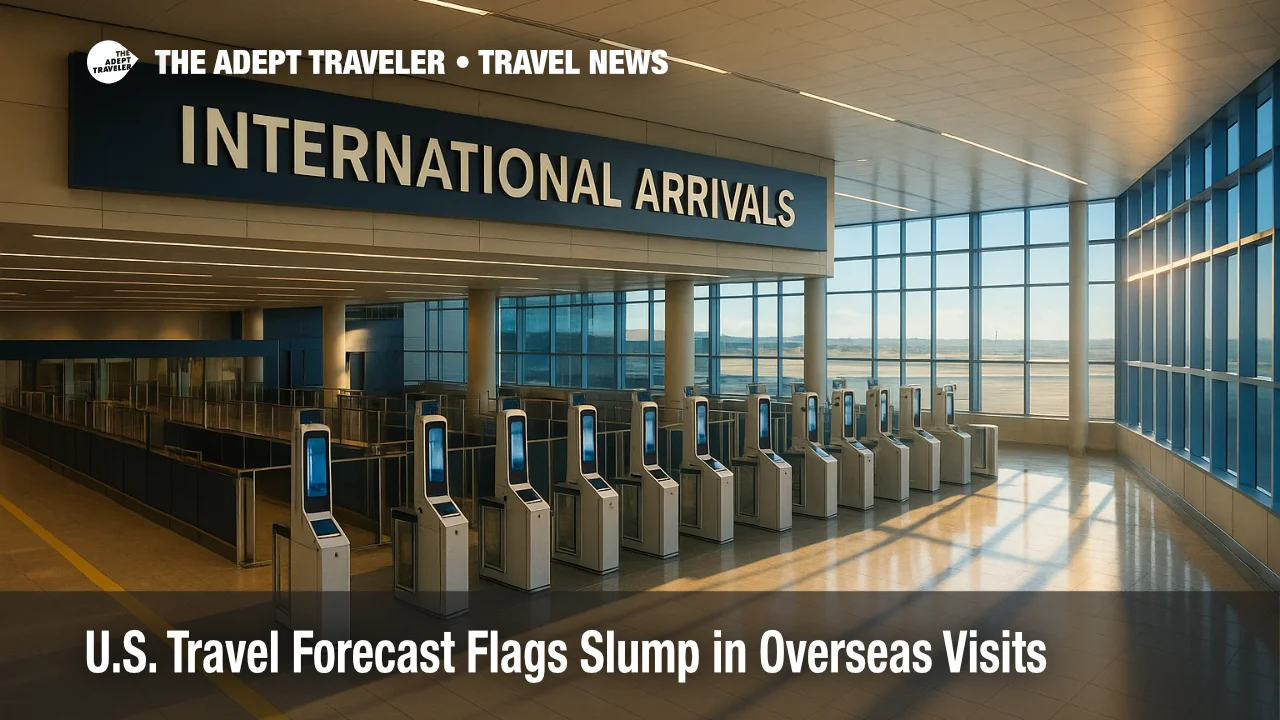U.S. travel forecast flags 2025 slump in overseas visits

The latest U.S. Travel Association forecast points to modest overall growth in 2025 while sounding a clear alarm about international demand. Total U.S. travel spending is projected to edge up 1.1% to $1.35 trillion in 2025, yet inbound international visits are expected to fall 6.3% year over year to 67.9 million. The association frames the outlook as both opportunity and warning, urging action on modernization, visa processing, and traveler messaging to protect jobs and export earnings.
Key points
- Why it matters: International visitors spend heavily, supporting U.S. jobs and communities.
- Travel impact: Inbound visits seen dropping from 72.4 million in 2024 to 67.9 million in 2025.
- What's next: A rebound is expected in 2026, aided by the FIFA World Cup and America 250.
- Domestic spending remains steady at a projected $1.2 trillion in 2025.
- Total travel spending could reach $1.49 trillion by 2029 if momentum returns.
Snapshot
U.S. Travel describes travel as a powerful engine of growth that supports nearly one in 10 American jobs and contributes $2.9 trillion to GDP. The 2025 forecast keeps domestic travel on a stable path, with U.S. travelers expected to spend about $1.2 trillion next year. International visitors, however, are projected to spend $173 billion in 2025 as visit volumes retreat, making travel the nation's largest services export but under pressure. The association calls out outdated systems, lengthy visa wait times, and new deterrents as factors pushing global travelers elsewhere, and urges the U.S. to streamline entry and signal clearly that America is open for business.
Background
After a multi-year recovery, the international side of U.S. travel is losing ground again in 2025. U.S. Travel's fall update shows inbound visits falling for the first time since 2020, reversing 2024 gains and widening an export shortfall. The outlook reflects a strong dollar, capacity and processing constraints, and competitive headwinds from destinations that have simplified entry and invested in visitor experience. Longer term, the forecast is not uniformly bleak. Major events on the horizon, including the FIFA World Cup in 2026 and America 250 commemorations, are expected to revive demand, with international visits projected to resume growth in 2026 and build toward record levels by 2029 if structural issues are addressed.
Latest developments
International demand softens despite steady domestic spend
U.S. Travel projects total spending to reach $1.35 trillion in 2025, rising to $1.49 trillion by 2029. Domestic travel remains the stabilizer, with $1.2 trillion in expected spend next year, supporting local economies nationwide. The weak spot is inbound: visits are forecast to fall 6.3% to 67.9 million in 2025, and international spending is estimated at $173 billion. The association ties the dip to visa wait times, aging infrastructure, and policy signals that dampen intent. It recommends modernizing systems and processes, improving wayfinding and biometric flows, and tightening public-private coordination to restore the U.S. value proposition before peak-event years return tailwinds in 2026.
Events could fuel a 2026 turnaround if bottlenecks ease
The forecast anticipates a pivot in 2026 as the FIFA World Cup and America 250 drive global attention and trips. With visits projected to resume growth in 2026, the upside depends on converting interest into arrivals through practical improvements: faster visa adjudication, reliable airport throughput, and a consistent "welcome" message. Aligning carriers, airports, DMOs, and federal partners around predictable processing and clear communications will help translate event-year enthusiasm into sustainable gains rather than one-off spikes. Done well, these catalysts can bridge the current gap and set a higher baseline through 2029.
Analysis
International visitors punch above their weight. They stay longer, spend more per trip, and disperse dollars to gateway cities and secondary markets. A 6.3% drop in visits is therefore more than a headline; it represents billions in lost export revenue and pressure on hospitality payrolls during a period of higher operating costs. The demand signal is not exclusively price-driven. Competing destinations have paired aggressive marketing with tangible friction reductions, from digital visas to expanded e-gates. The U.S. has pilots and pockets of excellence, but uneven execution creates uncertainty at the very moments that shape word-of-mouth. In the near term, industry stakeholders should prioritize traveler-visible wins: predictable visa interview timelines in key origin markets, scalable biometric identity at checkpoints, and multilingual, pre-trip communications that set expectations on entry, connectivity, and payments. Pair those with product moves travelers notice-digital credentials and streamlined boarding-already advancing across airlines and airports. With 2026 mega-events approaching, the U.S. has a narrow window to convert intent to arrivals by making the journey simpler from search to stamp.
Final thoughts
The 2025 outlook is a caution flag, not a stop sign. Domestic demand continues to carry the load, but restoring international momentum is essential to jobs and exports. Rapid steps on visas, infrastructure, and welcoming communications can steady the slope in 2025 and position the country to capitalize on 2026 event tailwinds. If partners execute, the industry can shift from defensive to offensive and chart a path toward the $1.49 trillion horizon-delivering broad-based gains that live up to the promise in the latest U.S. travel forecast.
Sources
- U.S. Travel Forecast 2025: Modest Growth but Decline in International Visitors Threatens Economy and Jobs, U.S. Travel Association
- Travel forecasts: 2025 outlook and projections, U.S. Travel Association
- U.S. Travel projects slow 2025 business travel growth, Business Travel News
- Restore international inbound travel, U.S. Travel Association
